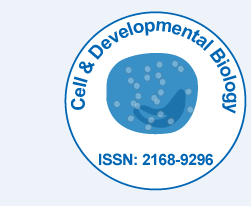
Cell & Developmental Biology
Open Access
ISSN: 2168-9296

ISSN: 2168-9296
Perspective - (2024)Volume 13, Issue 6
In the intricate anatomy of the human body, certain structures often go unnoticed despite their crucial role in maintaining essential functions. One such structure is the cricoid cartilage, a vital component of the respiratory system. This article aims to shed light on the significance of the cricoid cartilage and its pivotal role in breathing, highlighting its importance as an unsung hero in the symphony of respiration.
Understanding the cricoid cartilage
The cricoid cartilage is a ring-shaped structure located at the base of the larynx, or voice box. It forms a complete circle and sits atop the trachea, the windpipe. While it may seem small and inconspicuous, the cricoid cartilage plays a critical role in maintaining the patency and integrity of the upper airway.
Stability and protection
One of the primary functions of the cricoid cartilage is to provide stability and protection to the airway during breathing. Due to its ring-like shape, it acts as a rigid structure, preventing the collapse of the trachea and maintaining an open passage for the flow of air. This stability is particularly crucial during inhalation when negative pressure is generated within the thoracic cavity, facilitating the movement of air into the lungs. Without the support of the cricoid cartilage, the airway could collapse, leading to potentially life-threatening situations.
Vocalization and swallowing
Beyond its role in maintaining airway stability, the cricoid cartilage also contributes to vocalization and swallowing. Together with other structures in the larynx, it plays a vital role in producing sound during speech. By modulating the tension of the vocal cords and controlling airflow, the cricoid cartilage helps in the production of a wide range of sounds and tones.
Furthermore, the cricoid cartilage assists in the process of swallowing. As food or liquid is propelled toward the esophagus, the cricoid cartilage moves upwards and forwards, providing a protective barrier and ensuring that the passage to the trachea is closed off, preventing aspiration.
Clinical relevance
The cricoid cartilage holds significant clinical relevance in various medical procedures and emergency situations. In emergency medicine, the cricoid cartilage can be palpated and used as a reference point for performing an emergency cricothyroidotomy an incision made through the cricothyroid membrane to establish an alternative airway in cases of severe upper airway obstruction.
Moreover, during endotracheal intubation, the cricoid cartilage serves as a landmark for guiding the placement of the endotracheal tube into the trachea. By visualizing and aligning with the cricoid cartilage, healthcare professionals can ensure proper positioning of the tube, facilitating effective ventilation and oxygenation.
Controversies and challenges
Despite its importance, the cricoid cartilage has also faced controversies and challenges in certain medical practices. The application of cricoid pressure, also known as the Sellick maneuver, during rapid sequence intubation has been a topic of debate. While it was traditionally believed to compress the esophagus, preventing gastric regurgitation, its effectiveness and potential complications have been called into question. Balancing the need to maintain airway patency with the potential risks associated with cricoid pressure remains a topic of ongoing research and discussion.
The cricoid cartilage, often overshadowed by other prominent structures in the human body, plays an indispensable role in the symphony of breathing. From providing stability and protection to facilitating vocalization and swallowing, this seemingly modest structure is an unsung hero in ensuring the flow of air into the lungs.
Citation: Chen MW (2024). Crucial Component in the Symphony of Breathing in the Cricoid Cartilage. Cell Dev Biol. 13:379.
Received: 01-Oct-2024, Manuscript No. CDB-24-24922; Editor assigned: 04-Oct-2024, Pre QC No. CDB-24-24922 (PQ); Reviewed: 18-Oct-2024, QC No. CDB-24-24922; Revised: 25-Oct-2024, Manuscript No. CDB-24-24922 (R); Published: 01-Nov-2024 , DOI: 10.35248/2168-9296.24.13.379
Copyright: © 2024 Chen MW. This is an open-access article distributed under the terms of the Creative Commons Attribution License, which permits unrestricted use, distribution, and reproduction in any medium, provided the original author and source are credited.